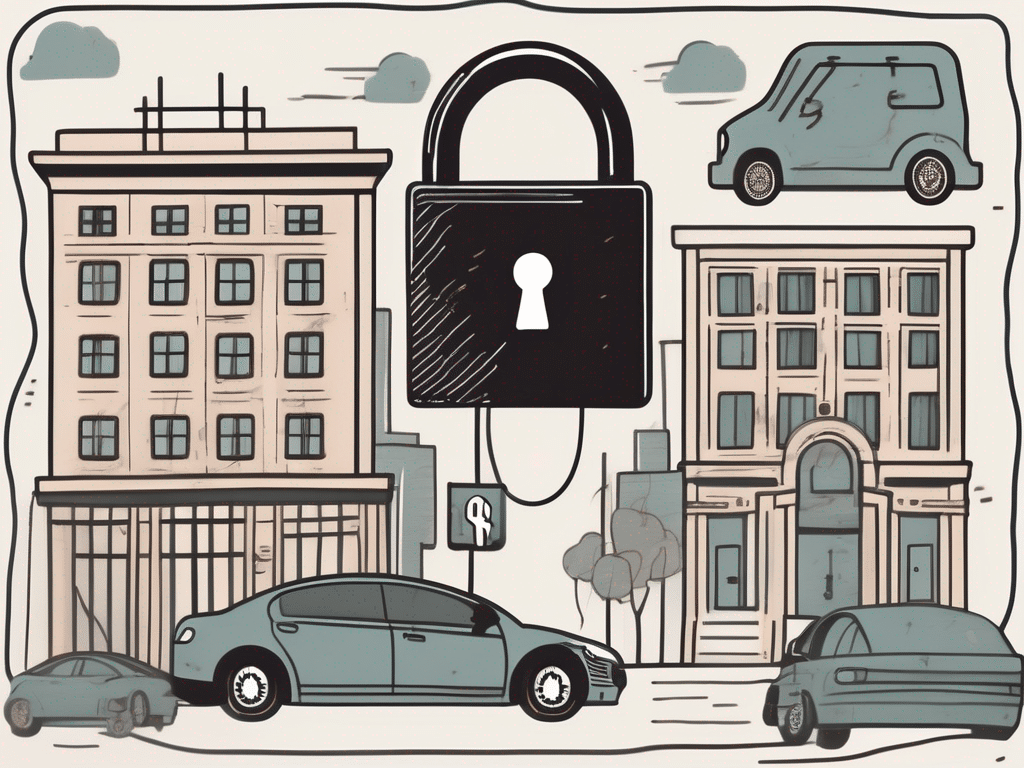In today’s ever-changing job market, it’s crucial for both employers and employees to be well-informed about their respective rights and obligations. One area that often comes into play is unemployment insurance. In the state of New York, understanding the obligations surrounding unemployment insurance is essential for both employers and workers alike.
The Basics of Unemployment Insurance in New York
Before delving deeper into the obligations, let’s first establish a firm foundation by understanding the basics of unemployment insurance in New York. Unemployment insurance, often referred to as UI, is a program aimed at providing temporary financial assistance to eligible individuals who have lost their jobs. The primary purpose of UI is to help individuals bridge the gap between jobs and avoid financial hardships during this transitional period.

Definition and Purpose of Unemployment Insurance
Unemployment insurance, as defined by the New York State Department of Labor, is a program funded by employers through payroll taxes. Its purpose is to provide eligible workers with payments to partially replace their lost wages when they become unemployed through no fault of their own. By providing this financial safety net, unemployment insurance helps stabilize the state’s economy and ensure that individuals can meet their basic needs while they search for new employment opportunities.
Who is Eligible for Unemployment Insurance?
While unemployment insurance serves as a vital lifeline for individuals facing job loss, it’s important to note that not everyone is eligible to receive these benefits. To qualify for unemployment insurance in New York, individuals must meet certain criteria set by the state. Eligibility requirements typically include having earned a minimum amount of wages during the base period, being unemployed through no fault of their own, being available and actively seeking suitable employment, and meeting additional conditions related to their work history and separation from previous employment.
Let’s take a closer look at the base period, which is an essential component in determining eligibility for unemployment insurance. In New York, the base period is generally the first four of the last five completed calendar quarters before the individual files their claim. This means that the wages earned during this period will be used to calculate the amount of benefits the individual may be entitled to receive.
Additionally, it’s worth noting that individuals who are self-employed or independent contractors may not be eligible for traditional unemployment insurance benefits. However, they may be eligible for assistance through the Pandemic Unemployment Assistance (PUA) program, which was established in response to the COVID-19 pandemic to provide support to those who are not typically covered by regular unemployment insurance.
The Role of Employers in Unemployment Insurance
Employers play a crucial role in the unemployment insurance process. Apart from providing an accurate and timely record of their employees’ wages, they also have financial responsibilities and a duty to comply with state regulations. The relationship between employers and the unemployment insurance system is a vital component of the social safety net, ensuring that workers have access to financial support during periods of job loss.

Employers not only contribute financially to the unemployment insurance program but also play a key role in its administration. Their cooperation and adherence to regulations help maintain the integrity of the system, preventing fraud and ensuring that benefits reach those who genuinely need them. By working hand in hand with state labor departments, employers help uphold the principles of fairness and support that underpin the unemployment insurance system.
Employer Contributions to Unemployment Insurance
In New York, employers are required to make contributions to the state’s unemployment insurance fund through payroll taxes. These contributions are calculated based on various factors, including the number of employees, the total wages paid, and the employer’s experience rating. By fulfilling their contribution obligations, employers contribute to the overall funding of the unemployment insurance program, ensuring that it remains sustainable and accessible for eligible individuals.
Employer contributions not only provide financial support to workers in need but also help stabilize the economy during downturns. By pooling resources through unemployment insurance funds, employers collectively mitigate the impact of job losses on individuals and communities. This shared responsibility reflects a commitment to social welfare and economic stability, highlighting the interconnectedness of employers, employees, and government in addressing unemployment challenges.
Employer Responsibilities and Penalties
Employers also have specific responsibilities when it comes to unemployment insurance. These responsibilities include accurately reporting their employees’ wages, responding to requests for information from the New York State Department of Labor, and properly classifying workers to determine their eligibility for UI benefits. Failure to meet these obligations can result in penalties, such as fines or increased tax rates, which can have a significant impact on an employer’s bottom line.
Compliance with unemployment insurance regulations is not only a legal requirement but also a moral obligation for employers. By fulfilling their responsibilities, employers uphold the social contract that underlies the unemployment insurance system, demonstrating their commitment to supporting their workforce and contributing to the broader social good. Adherence to these regulations fosters trust between employers, employees, and government agencies, creating a foundation of stability and reliability in times of economic uncertainty.
Claiming Unemployment Insurance in New York
For individuals who find themselves unemployed, understanding the process of claiming unemployment insurance benefits is crucial. Navigating the application process and understanding the factors that determine benefit amounts can make a significant difference in their financial stability during this challenging period.
Unemployment insurance is a vital safety net for those facing unexpected job loss or economic hardship. In New York, the system is designed to provide temporary financial assistance to eligible individuals while they search for new employment opportunities. By familiarizing themselves with the intricacies of the unemployment insurance program, claimants can ensure they receive the support they need to weather this uncertain time.
How to Apply for Unemployment Insurance
Applying for unemployment insurance benefits in New York can typically be done online through the New York State Department of Labor’s website. The application process requires individuals to provide detailed information about their employment history and separation from previous employment. It’s essential to complete the application accurately and honestly to avoid any delays or potential issues with the UI claim.
Additionally, applicants may need to fulfill certain requirements, such as actively seeking work and being able and available to accept suitable employment. Understanding and meeting these obligations are crucial to maintaining eligibility for unemployment benefits throughout the duration of the claim.
Determining Your Benefit Rate
Once the application is submitted, the New York State Department of Labor will review the information provided to determine the individual’s eligibility and calculate their benefit rate. The benefit rate is typically a percentage of the individual’s average weekly wage, within certain predetermined limits set by the state. Understanding how this rate is determined can help individuals plan their finances and have a realistic expectation of the support they will receive from unemployment insurance.
Factors such as the reason for separation from employment, the amount of wages earned during a specified period, and any additional income sources may also influence the benefit rate. By grasping the nuances of these calculations, claimants can better anticipate the financial assistance they are entitled to and make informed decisions regarding their budgeting and expenses while unemployed.
Disputes and Appeals in Unemployment Insurance
While the unemployment insurance system aims to provide seamless support to eligible individuals, disputes and denial of claims can occasionally occur. Knowing the potential reasons for denial and the appeal process available can help individuals navigate any challenges they may face.

Reasons for Denial of Unemployment Insurance
There are various reasons why an individual’s unemployment insurance claim may be denied. Some common reasons include not meeting the eligibility criteria, voluntarily leaving work without good cause, or being terminated for misconduct. It’s essential for individuals to familiarize themselves with these potential reasons to ensure that they fulfill the requirements and have the best chance of receiving the benefits they are entitled to.
The Appeal Process for Denied Claims
If a claim is denied, individuals have the right to appeal the decision. The appeal process involves submitting a request for a hearing and presenting evidence to support their case. It’s crucial to carefully review the denial notice and follow the instructions provided to ensure that all necessary documentation is submitted within the required timeframe. Engaging in the appeal process allows individuals to present their situation and potentially overturn the initial denial.
Recent Changes and Updates to Unemployment Insurance
Unemployment insurance programs are subject to changes and updates to adapt to evolving circumstances. It’s important for individuals and employers to stay informed about recent developments that may impact their obligations and rights.
Impact of COVID-19 on Unemployment Insurance
The COVID-19 pandemic has had a significant impact on unemployment insurance programs across the country, including in New York. The state has implemented various measures to address the surge in unemployment claims resulting from the pandemic. These measures include extending the duration of benefits, increasing the benefit payments, and expanding eligibility criteria to accommodate individuals who may not have traditionally qualified for UI benefits.
Future Projections for Unemployment Insurance in New York
As the economy continues to evolve, it’s important to consider future projections for unemployment insurance in New York. Various factors, such as technological advancements, changes in industries, and economic trends, can influence the demand for unemployment benefits and how the program will be structured moving forward. By staying informed about these projections, both individuals and employers can anticipate potential changes and better prepare themselves for any adjustments necessary in the future.
In conclusion, understanding the obligations and workings of unemployment insurance in New York is critical for both employers and individuals. By familiarizing themselves with the basics, employer responsibilities, claiming process, dispute resolution, and recent updates, all parties involved can navigate the system more effectively. Unemployment insurance serves as a vital safety net and can make a significant impact in supporting individuals facing unemployment and facilitating their transition to new employment opportunities


